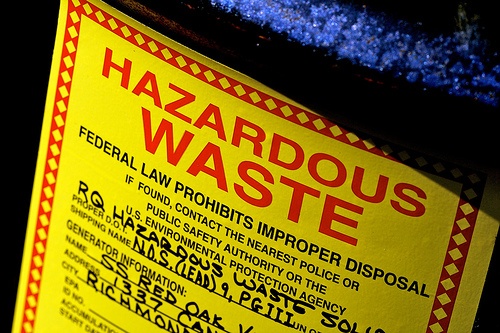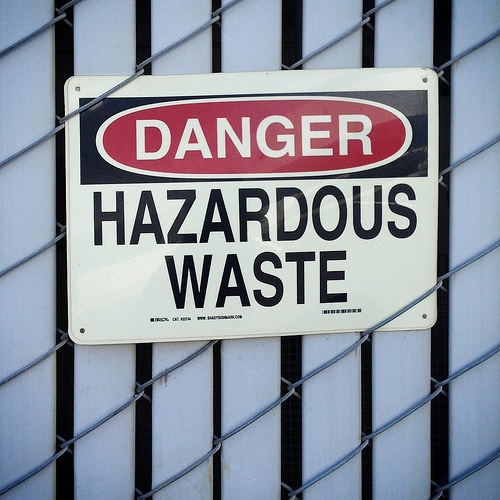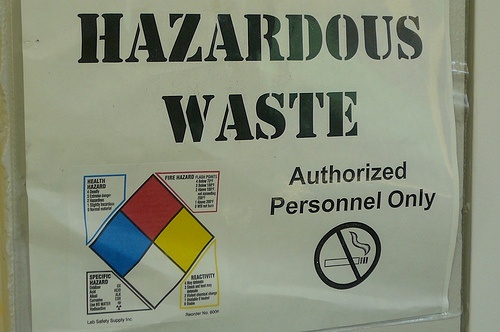Efforts to prevent and respond to chemical disasters are undergoing their first thorough review since many were created decades ago after December 1984’s catastrophe in Bhopal, India. President Obama triggered these reviews in August 2013, when he issued an Executive Order directing federal regulatory agencies to review specified regulatory programs that are designed to prevent such disasters: Occupational Safety and Health Administration’s (OSHA) Chemical Process Safety Management Standard (PSM); Environmental Protection Agency’s (EPA) Accidental Release Prevention (ARP) program and Emergency Planning and Right-to-Know Act (EPCRA) program; and Department of Homeland Security’s (DHS) Chemical Facility Anti-Terrorism Standards (CFATS) program (I blogged about the EO here, OSHA’s consideration of PSM changes here, EPA’s call for comments on possible ARP revisions here, one of the agencies’ joint reports here, and about subsequent revisions to CFATS here and here). On February 25, 2016 EPA proposed ARP revisions, which I describe below.
Read MoreAudit, Compliance and Risk Blog
EPA Proposes Revisions To Accidental Release Prevention Requirements
Posted by Jon Elliott on Thu, Mar 17, 2016
California is a persistent exception to states’ limited abilities to create long-lasting effects on national environmental health and safety (EH&S) programs. One example, well-known here in California but relatively invisible to EH&S professionals outside the state, is Proposition 65.
Tags: OSHA, California Legislation, EHS, Hazcom, MSDS
Federal laws (commonly referred to as RCRA, after the Resource Conservation and Recovery Act of 1976) provide comprehensive management requirements for parties involved in hazardous waste management, from “cradle to grave” covering generators, transporters, and offsite management facilities. Among these many provisions are requirements that “large quantity generators (LQGs)” submit biennial reports to the Environmental Protection Agency (EPA) or delegated states in March of every even-numbered year. March 2016 is the next such deadline, so now is a good time to review biennial report requirements.
Who Must File Biennial Reports?
A facility that was an LQG during calendar year 2015 must file a biennial report. LQGs are defined as a facility that generates either of the following during a calendar month:
California Proposes Workplace Violence Prevention Requirements For Healthcare Facilities
Posted by Jon Elliott on Tue, Feb 09, 2016
Employees in the health care and social service sectors suffer workplace violence at much higher rates than in most other sectors, largely because of the higher risk from their patients and clients. In response to these risks, worker protection agencies and professional organizations have developed guidelines for workplace violence prevention in these sectors. Increasingly, worker protection laws and regulations are being revised to require these activities. Most recently, in December 2015 California has proposed to expand state requirements for security plans to include explicit workplace violence prevention programs.
Existing Requirements For Security Plans
Tags: Employer Best Practices, Health & Safety, OSHA, Employee Rights, California Legislation, EHS, Workplace violence
The Occupational Safety and Health Administration (OSHA) requires most employers to prepare and maintain records of occupational injuries and illnesses (I&I Logs) as they occur. OSHA also requires employers to post an annual I&I Summary in each “establishment” within their workplace by February 1, summarizing that workplace’s I&Is during the previous calendar year. Delegated state-run programs impose comparable requirements.
Read MoreTags: Employer Best Practices, Health & Safety, OSHA, Employee Rights, EHS
Congress Accelerates And Expands Civil Penalty Inflation Adjustments
Posted by Jon Elliott on Thu, Jan 28, 2016
Activists and politicians have long argued that potential punishments might be treated as a cost of doing business, and if that cost is low enough compared with the cost of compliance that some organizations may choose to ignore the requirements and take their chances. This possibility grows over time, if nominal penalty levels are left unchanged while inflation effectively reduces them.
To counteract inflationary erosion of these the effects of inflation, for the past quarter century U.S. federal law has directed most agencies to make periodic “cost of living” adjustments to maximum available civil penalty levels (there are no provisions for standing periodic adjustments to criminal penalties). The first version of this approach was enacted by the Federal Civil Penalties Inflation Adjustment Act of 1990, which directed the President to report annually on any adjustments made under existing statutory authority, and to calculate what such adjustments would have been if more agencies had the authority to make them.
How Has The Act Worked Since 1996?
Congress amended the Act in 1996 to authorize and require most agencies to make inflation adjustments every four years. The exceptions precluded cost of living adjustments to penalties under the following:
Read MoreTags: Health & Safety, OSHA, EHS, EPA
EPA Proposes To Revise Hazardous Waste Generator Requirements–Part 2
Posted by Jon Elliott on Wed, Jan 20, 2016
Separate Summaries For Generator Categories
In September, EPA published substantial regulatory revisions (which EPA entitles collectively as the Hazardous Waste Generator Improvements Rule) to its regulation of hazardous waste generators under the Resource Conservation and Recovery Act. In Part 1 of this series of blogs (click here), I summarized the principal revisions. In this Part 2 I recast the proposal to compile changes applicable to different categories of generators:
-
“Conditionally exempt small quantity generators (CESQGs)” – which are being renamed as “very small quantity generator (VSQG)”.
-
Small quantity generators (SQGs).
-
Large quantity generators (LQGs).
What Requirements Would Apply To VSQGs?
EPA’s proposes to rename Conditionally Exempt Small Quantity Generators (CESQGs) as Very Small Quantity Generators (VSQGs), and to offer these generators additional flexibility. Eligibility for this category continues to be determine based on the following monthly waste generation volumes: Read MoreTags: Health & Safety, OSHA, EHS, EPA, Greenhouse Gas, Hazcom
EPA Proposes To Revise Hazardous Waste Generator Requirements–Part 1
Posted by Jon Elliott on Mon, Jan 18, 2016
Summary Of Proposals
The U.S. Environmental Protection Agency (EPA) has spent the last decade considering revisions to its hazardous waste management regulations (issued under federal laws generally referred to as the Resource Conservation and Recovery Act (RCRA)), exploring opportunities to clarify and simplify the text of the regulations and the actions necessary for compliance. In September, EPA published substantial regulatory revisions (which EPA entitles collectively as the Hazardous Waste Generator Improvements Rule) in the Federal Register; comments were due by December 24, after which EPA will decide whether to finalize the changes. EPA calculates that these proposals will include more than 60 changes to specific requirements, and more than 30 additional technical clarifications and corrections. These revisions would clarify some existing provisions, remove some longstanding requirements, and also add some additional new requirements. Some requirements apply to nearly all generators, while others are targeted at one or more of three volume-based tiers.
Read MoreTags: Health & Safety, OSHA, EHS, EPA, Hazcom
Every winter, employee and public health officials around the world prepare for influenza (“flu”) seasons, which vary from mild to the occasional pandemic. Here in the U.S., the Centers for Disease Control and Prevention (CDC) issue annual forecasts of the strain(s) expected to be dominant, the severity of resulting health impacts, and of the availability and efficacy of vaccinations.
Read MoreTags: Employer Best Practices, Health & Safety, OSHA, Employee Rights, California Legislation
OSHA Proposes to Revise Safety and Health Program Guidelines
Posted by Jon Elliott on Tue, Dec 08, 2015
In 1989 OSHA issued “Safety and Health Program Management Guidelines” (S&H Guidelines), recommending activities employers should undertake to ensure their employees’ safety and health. The S&H Program Guidelines encourage employers to institute and maintain an “effective occupational safety and health program.” Some state occupational safety and health regulators have used these (voluntary) guidelines as the basis for mandatory employer programs – including California’s Injury and Illness Prevention Program (IIPP) requirement and Washington’s Accident Prevention Program (APP) requirement. OSHA proposed a national rule in 2012, but after several delays has designated it a “long term action.”
Read MoreTags: Employer Best Practices, Health & Safety, OSHA, Employee Rights, EHS










